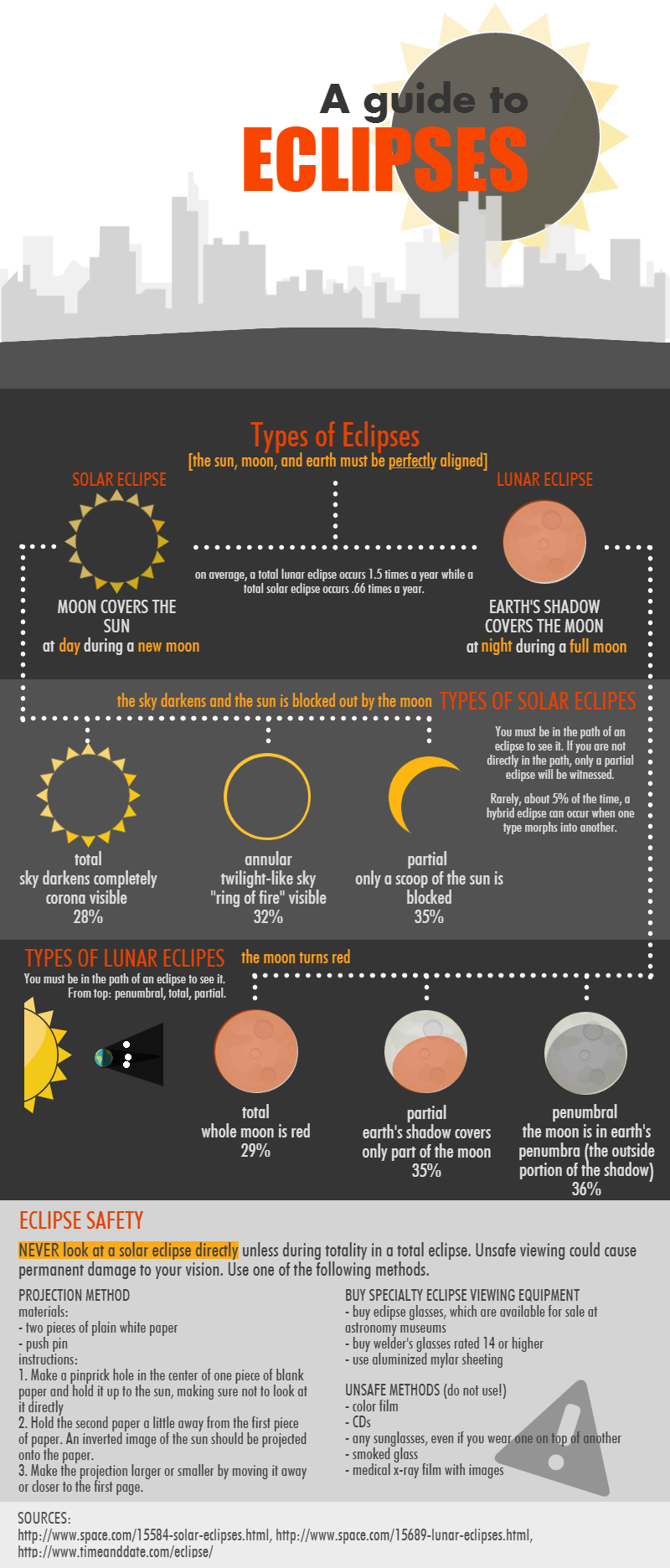Eclipses

In the past, eclipses were a thing of terror. Across the world, people saw them as a symbol of wrath from the supernatural. Chinese legends portrayed eclipses as the result of a dragon eating the sun and moon, and as a result, terrified citizens rushed to bang drums to scare away the monster. In Egypt, ancient belief was that the cause of this phenomenon was the serpent Apep attacking the Sun god’s boat. Predicting these eclipses were of great importance, and execution could await astronomers who failed.
However, nowadays, due to the knowledge of the mechanics behind eclipses, people view eclipses not as a sign of vengeful gods but as a symbol of the beauty of nature. This spring, two eclipses are set to occur. On March 20th, a total solar eclipse will appear, and on April 4th, there will be a partial lunar eclipse. Although the direct path of the total solar eclipse will only fall through Svalbard and the Faroe Islands, a partial eclipse can be seen in Europe, northeastern Asia, northern Africa, and northwestern North America. A partial lunar eclipse will be in view on April 4th in Asia, eastern Africa, Australia, all except eastern North America, and most of South America. In Austin, early risers will be able to witness the start of the April 4th lunar eclipse at 4:00 AM until the moon passes under the horizon after eclipse’s maximum point at 7:00 AM.
Lunar eclipses such as the one on April 4th are caused by the moon passing under the shadow of Earth. The shadow has two portions, the umbra, the deepest part of the shadow, and the penumbra, the partial shadow. When a full moon passes through the umbra, a total lunar eclipse is created. However, in a partial eclipse, the moon only passes through part of the umbra. Therefore, only some of the red shadow can be seen. In the April 4th eclipse, nearly all of the moon will be covered by the umbra, resulting in a reddish orange color.
Since lunar eclipses are much more common than their sister solar eclipses, a sighting is not an rare occurrence among our mustangs. As 6th grader Elena VanMetre recounts, “Our family waited up on a hill near Canyon Vista and there were a few other groups watching for the eclipse as well.” She wraps up her experience saying, “Even though I had to wake up early and I was tired afterwards, it was so cool. I would definitely do it again.”
More than just one type of eclipse has occurred recently in Austin. Last fall, a partial solar eclipse could be seen across Central Texas. While the sun set, fascinated viewers watched as a dent grew in one corner of the sun. Though the day was cloudy, in the end, the sky cleared enough so that observing the eclipse was possible. This “sunset eclipse” is a rare occurrence that viewers across Texas highly appreciated.
Solar eclipses like the sunset eclipse occur when a new moon passes in front of the sun. A dark scoop grows in the side of the sun, enveloping it in the event of a total eclipse. When the moon completely covers the sun, artificial night is created in the middle of day, and it’s the only time the sun’s corona can be seen. Like the lunar eclipse, it doesn’t happen every moon cycle because the plane of the Moon’s orbit and the plane of the Earth’s orbit are slightly different. A total solar eclipse, such as the March 20th eclipse, only occurs twice every three years. During spring break, tourists may vacation to Svalbard or the Faroe Islands to view this spectacular phenomenon. The event of a total solar eclipse is so breathtaking that people known as eclipse chasers will travel to locations all over the world to catch sight of each one.
The March 20th solar eclipse may be too far off to glimpse, but on April 4th, people all around the city will surely be watching the skies for signs of a lunar eclipse. For the small price of an early morning wake-up, you may be able to witness the same cosmic phenomenon that, even since thousands of years ago, humans have continually observed and become astounded by.



















